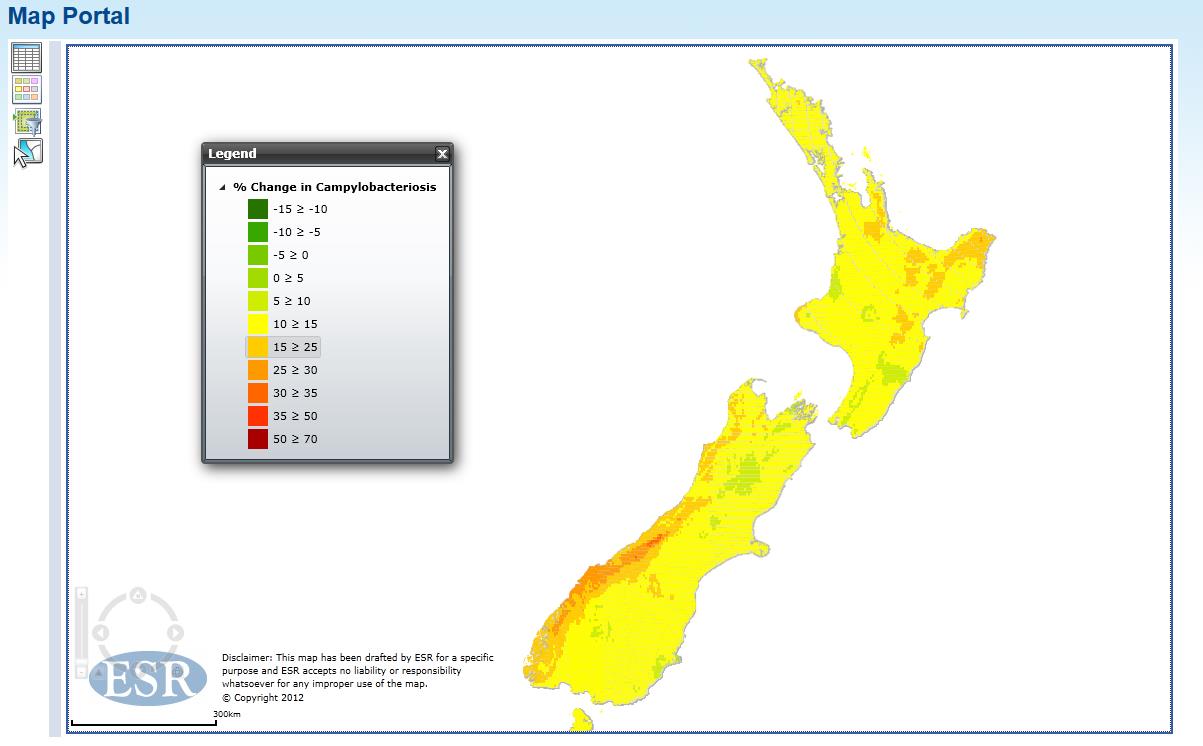How will climate change affect New Zealand’s vulnerability to infectious diseases?
In a effort to answer this question, Crown Research Institute ESR has launched a new site, Health Analysis & Information For Action (HAIFA), comprising a number of resources to help central, regional and local authorities to plan ahead for how disease dynamics will change in a warming future.
At heart of the HAIFA is a web-based map interface which can display disease projections at a 5×5 km scale across New Zealand for six infectious diseases (campylobacteriosis, cryptosporidiosis, meningococcal disease, influenza, and Ross River and dengue fevers) under different greenhouse gas emission scenarios over time.
For example, under the worst emissions scenario campylobacteriosis rates are calculated to increase across parts of New Zealand by 26% (and 34% in summer), compared with rates reported in 2002. For seasonal influenza (with vaccination), however, statistical modelling for the same scenario projects a decrease of 5%.

The site also include a number of resources and tools to assess water and disease vulnerability for communities.
A collaborative research programme, led by ESR, developed the resource over a four-year period. Collaborators included NIWA, Landcare Research, Massey and Waikato Universities, as well as Australian universities and the World Health Organization.